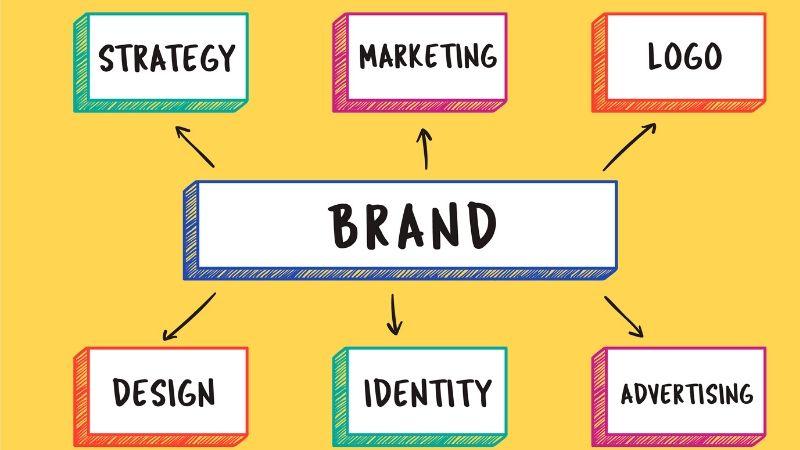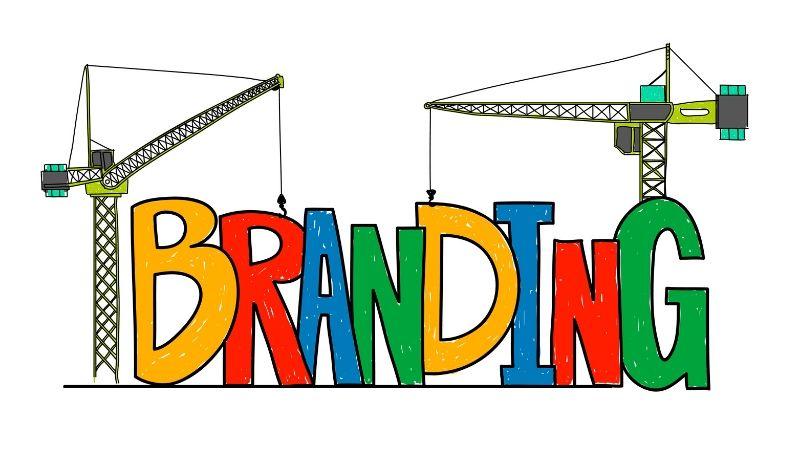Don’t have money? No problem. Use these 7 proven steps to build your brand without breaking the bank.
If you’re anything like most new business owners, you are facing either one or all of these challenges:
- Nobody or just a handful of people know about your business.
- You’re struggling to establish a brand personality for your business.
- You already know what steps to take to build your brand, but you’re constrained because of limited resources – you don’t have the money.
Does any of the points above describe your situation?
I take it, you are already familiar with what a ‘brand’ is and why you should build your brand. If you’re not, here’s a quick rundown:
Want to Grow Your Real Estate Business? Download the Complete Grant & Funding eBook for instant access to grants, guides, and more. 80+ Grant and Scholarship Opportunities (FG, State-by-State, General & Underrepresented Groups Scholarships, Plus Grant Writing Checklist). 900+ Copies Sold Already. Get Your Copy Now
What exactly is a ‘brand’?

Usually, when we think of a brand, we imagine it to be the logo, colour scheme, name and maybe, the tagline of a particular business.
Sure, these ‘assets’ – as I like to call them – are important aspects of branding, but a brand goes way beyond these tangibles.
Think of it this way:
Your brand is how people feel – the emotions they get – when they interact with your business. Your brand includes the words people use to describe your business.
So, imagine your customers are describing their experience after interacting with you. They are typically not going to talk about what colour your logo is nor the design.
More often than not, it is the emotions your business evoked – how they felt, that would be topmost in their minds.
That emotion, that feeling – is what branding is all about.
It’s pretty obvious from the definition above that every business should take branding serious – you don’t want to give away control of how customers feel about your business, do you?
Related: Personal Branding Questions Answered
Here are 3 More Reasons to Build Your Brand

Branding sets you apart from the competition
That’s probably one of the obvious benefits of branding, but very crucial to the success of your business nonetheless.
With the ever-increasing number of businesses competing for the same customers, differentiating yourself with branding, helps make it a lot easier for consumers to discover your business.
The smartphone retail niche in Nigeria is a great illustration of how branding can help set your business apart.
Imagine for a moment, you need a new phone. You’ve done your research, you know the specifications and price of the phone.
Then you went to the market – you saw a Slot Phones store and other roadside vendors.
Chances are you will buy the phone from the Slot Phones store. Why is that?
One word. Branding.
Branding builds trust
Back to our illustration, if you dig a little into why you choose to buy from the Slot Phones store instead of the roadside vendor, you’ll realise, it’s because you trust them.
Here are what’s going through your mind:
- Slot phones is a brand that’s known everywhere – so they will always protect their name.
- They have a permanent location you can return to should the phone develop issues – so they can’t vanish just like that.
- You believe their phones are likely going to be originals – They can’t sell fakes.
- And then, there’s the warranty offer you can take advantage of in the future – an assurance of future service.
By building a brand, Slot Phones has eliminated all the concerns buyers have when buying a new phone.
Branding inspires loyalty
Ever wondered why iPhone users swear by Apple products even though there are way cheaper options on the market?
Or why DSTV subscribers will always stick to the cable TV, even when they complain of high subscription fees?
In my home, we don’t use any other toothpaste apart from CloseUp. Sure, one can find other cheaper or even better options, yet every time we need a new toothpaste, we always go for CloseUp.
Think of it, in your life right now, there’s certainly one product/service you use which even though, you may get a better price on other substitutes, you still end up buying.
That’s exactly what branding does – it inspires customer loyalty.
You may also like: How to Nurture Emotional Connection With Your Customers
Now you know why you need to build a brand. The next question is, how do you do it?
And, as I suspect, you want to build your brand without spending a fortune, right?
How to Build Your Brand in 7 Steps

First, understand your target audience
Before you do anything on branding, you need to first understand who your ideal customers are. Your ideal customer is a specific group of people most likely to buy from you.
So, you see, without a clear understanding of your target audience, branding becomes pretty much a case of throwing wet noodles on the wall and hoping they stick.
Your marketing, brand positioning, and messaging will all be wasted if you don’t have a specific group you’re targeting.
The key thing to remember here is: not everyone is your target market. So, how do you find customers that matter?
Conduct keyword research
Your goal here is to understand what terms people use to search for related products and services online.
Thankfully, you have several free keyword research tools to choose from. Google Keyword Planner, UberSuggest from Hubspot, and SEMRush are some of the free tools to use.
Google Keyword Planner, for instance, allows you to drill down to search volumes, understand how difficult it is to rank for it, and to see the average amount your competitors are paying to rank for those keywords.
With the insights and keywords discovered, you can now position your brand to rank for those phrases.
Here’s an article that breaks down how to rank your website and position your brand to be discovered by your target market.
Talk to existing customers
Talking to existing customers is an effective way to learn about what motivates them to buy from you.
You may want to ask them these questions:
- How they are using your products.
- What problems they are currently solving with your service/product you never thought about before.
- What they wished you could do better
- What feature they wished to see in the next update – if your product is a software.
- What they loved about your product/service
With the answers to these questions, you can now double down on things you’re doing so well, and improve where necessary.
Mine sales and support data
Your sales and support teams are a trough of data treasure you should mine to learn more about your customers.
Think of it, these guys are your customer-facing people. They are always in touch with customers and are often the buyer’s first touch-point – which means, they have a first-hand experience of what your customers want.
To take advantage of their insights, consider setting up a weekly debriefing system that encourages your team to document customer complaints, and comments and suggestions.
It could be as simple as creating a Google Spreadsheet with access to everyone, so they can easily enter their notes.
Listen in on online discussions
Your target audience is online. They use social media and ask questions on online forums. Seek them out on these platforms and pay attention to what they are talking about.
Platforms like Quora and Nairaland are great places to begin. Set up Google notifications to track important niche-specific news. And use Twitter and Facebook groups to engage with them.
Take note of the questions your customers are asking, Quora does that perfectly. Search for industry-specific review sites and read up on user reviews. Pay attention to the bad reviews – they are an often neglected goldmine to gain insight on users really want.
Who are your competitors?
While you don’t want to pay too much attention to your competitors; they can be a source of valuable insights into what’s working and not working.
And, the insights gained could help you uncover differentiating features for your brand that could be amplified.
Some of the areas you may want to focus on include:
- Their brand voice – you don’t want your brand to sound exactly like theirs.
- How they are using social media – you want to know what kind of content their audience are engaging with.
- How often the share content on these platforms – it gives you an idea of how to schedule your posts.
- You may also want to play the pretend-game as a customer to get a feel of their process and customer support.
- If it’s possible, ask current customers what made them patronize your competitors.
A quick way to uncover who your major competitors are is to do a Google search. Search for related product/service on Google – the top-ranking businesses are the ones you need to focus on.
Define your brand personality

Time to bring your brand to alive. Remember, while creating the brand personality to focus on the target audience you’ve identified above.
Here’s where you decide the kind of emotions you want customers to feel, your brand tone and value proposition.
To help you get started, here are some questions you will need to answer:
How do you want potential customers to feel?
What is your positioning statement?
What’s your brand voice?
What words do you want to be associated with your brand?
Create your brand assets
The answers to the questions above should guide you as you start creating your brand assets.
For instance, your answer to how you want potential customers to feel should help you select the best colour-palette that would evoke such emotions.
Do you want customers to feel excited? Orange, golden, and yellow often trigger the feeling of excitement. Here’s an article that goes deeper into the psychology of colour.
Once you have made a choice of colour, be sure to use them in your logo design, website and across all social media channels.
Tell your brand story
People love a good story. It humanizes brands and makes them relatable. A good story helps you by-pass hardwired biases. It helps you get people to be comfortable with you.
Thankfully, you have one – even if you think you don’t have a good story to tell – there’s something you can share that’s relatable.
To help you find your brand story, you may want to ask yourself:
- Why did you start the business?
- What kind of life will you have if you succeed in your business?
- What problem are you trying to solve?
- How will your customers’ lives change from using your product?
- Are you fighting a social course – are you donating a certain portion of profit to feed someone?
- Is the business environmentally friendly – are you planting trees and saving the planet from the proceeds?
Sometimes. all you need is a story, told in a compelling way to differentiate your brand.
Connect, build trust & authority

Your website, social media, and newsletters are excellent channels to connect with your audience.
At the heart of your effort to build trust and authority is content. You will need to consistently share helpful, valuable and timely content on your channels.
As is often the case, people will gradually begin to take note of your brand, they will begin to see you as an expert, and when they need a related service, you will be the first they turn to.
To get started with your content creation and distribution, you will need to:
- Create a content marketing strategy
- Design a content calendar
- Allocate time for content creation, or
- Hire freelance writers.
- Design a content distribution strategy
- Develop a style guide to ensure consistent brand voice
Remember, stay authentic and genuine, with time as more people consume your content, they will begin to recognize your brand, trust you and respect you as an expert in your niche.
Monitor, iterate, evolve
Think of your brand as a living, evolving entity. Building your brand doesn’t end with the creation of your logo. It is a continuous work you must keep doing to maintain a consistent voice across all channels.
As you grow and learn more about your customers, you must iterate to accommodate the new insights.
So, there you have it. With these 7 steps above you can build your brand without breaking the bank.

